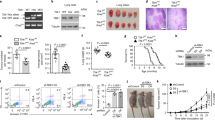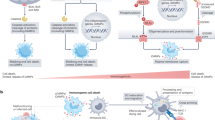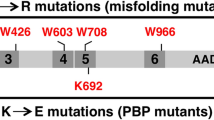Abstract
EUKARYOTIC cells respond to different extracellular stimuli by recruiting homologous signalling pathways that use members of the MEKK, MEK and ERK families of protein kinases. The MEKK→ MEK→ ERK core pathways of Saccharomyces cere-visiae may themselves be regulated by members of the STE20 family of protein kinases1,2. Here we report specific activation of the mammalian stress-activated protein kinase (SAPK) pathway by germinal centre kinase (GCK; ref. 3), a human STE20 homologue3,4. SAPKs, members of the ERK family, are activated in situ by inflammatory stimuli, including tumour-necrosis factor (TNF) and interleukin-1, and phosphorylate and probably stimulate the transactivation function of c-Jun5-7. Although GCK is found in many tissues, its expression in lymphoid follicles is restricted to the cells of the germinal centre, where it may participate in B-cell differentiation3. Activation of the SAPK pathway by GCK illustrates further the striking conservation of eukaryotic signalling mechanisms and defines the first physiological function of a mammalian Ste20.
This is a preview of subscription content, access via your institution
Access options
Subscribe to this journal
Receive 51 print issues and online access
$199.00 per year
only $3.90 per issue
Buy this article
- Purchase on Springer Link
- Instant access to full article PDF
Prices may be subject to local taxes which are calculated during checkout
Similar content being viewed by others
References
Levin, D. E. & Errede, B. Curr. Opin. Cell Biol. 7, 197–202 (1995).
Herskowitz, I. Cell 80, 187–197 (1995).
Katz, P., Whalen, G. & Kehrl, J. H. J. biol. Chem. 269, 16802–16809 (1994).
Leberer, E. et al. EMBO J. 11, 4815–4824 (1992).
Kyriakis, J. M. et al. Nature 369, 156–160 (1994).
Dérijard, B. et al. Cell 76, 1025–1037 (1994).
Sánchez, I. et al. Nature 372, 794–798 (1994).
Han, J., Lee, J.-D., Bibbs, L. & Ulevitch, R. J. Science 265, 808–811 (1994).
Avruch, J., Zhang, X.-f. & Kyriakis, J. M. Trends biochem. Sci. 19, 279–283 (1994).
Cowley, S., Paterson, H., Kemp, P. & Marshall, C. J. Cell 77, 841–852 (1994).
Mansour, S. J. et al. Science 265, 966–970 (1994).
Rouse, J. et al. Cell 78, 1027–1037 (1994).
Freshney, N. W. et al. Cell 78, 1039–1049 (1994).
Choi, K.-Y., Scatterberg, B., Lyons, D. M. & Elion, E. A. Cell 78, 499–512 (1994).
Dérijard, B. et al. Science 267, 682–685 (1995).
Yan, M. et al. Nature 372, 798–800 (1994).
Manser, E. et al. Nature 367, 40–46 (1994).
Martin, G. A., Bollag, G., McCormick, F. & Abo, A. EMBO J. 14, 1970–1978 (1995).
Freisen, H., Lunz, R., Doyle, S. & Segall, J. Genes Dev. 8, 2162–2175 (1994).
Coso, O. A. et al. Cell 81, 1137–1146 (1995).
Minden, A. et al. Cell 81, 1147–1157 (1995).
Bruder, J. T., Heidecker, G. & Rapp, U. R. Genes Dev. 6, 545–556 (1992).
Lee, J. C. et al. Nature 372, 739–746 (1994).
Author information
Authors and Affiliations
Rights and permissions
About this article
Cite this article
Pombo, C., Kehrl, J., Sánchez, I. et al. Activation of the SAPK pathway by the human STE20 homologue germinal centre kinase. Nature 377, 750–754 (1995). https://doi.org/10.1038/377750a0
Received:
Accepted:
Issue Date:
DOI: https://doi.org/10.1038/377750a0
This article is cited by
-
MAP4K3/GLK in autoimmune disease, cancer and aging
Journal of Biomedical Science (2019)
-
A global transcriptional view of apoptosis in human T-cell activation
BMC Medical Genomics (2008)
-
Hematopoietic progenitor kinase 1 negatively regulates T cell receptor signaling and T cell–mediated immune responses
Nature Immunology (2007)
-
Tumor necrosis factor signaling
Cell Death & Differentiation (2003)
-
Comparative studies of a new subfamily of human Ste20-like kinases: homodimerization, subcellular localization, and selective activation of MKK3 and p38
Oncogene (2003)
Comments
By submitting a comment you agree to abide by our Terms and Community Guidelines. If you find something abusive or that does not comply with our terms or guidelines please flag it as inappropriate.



